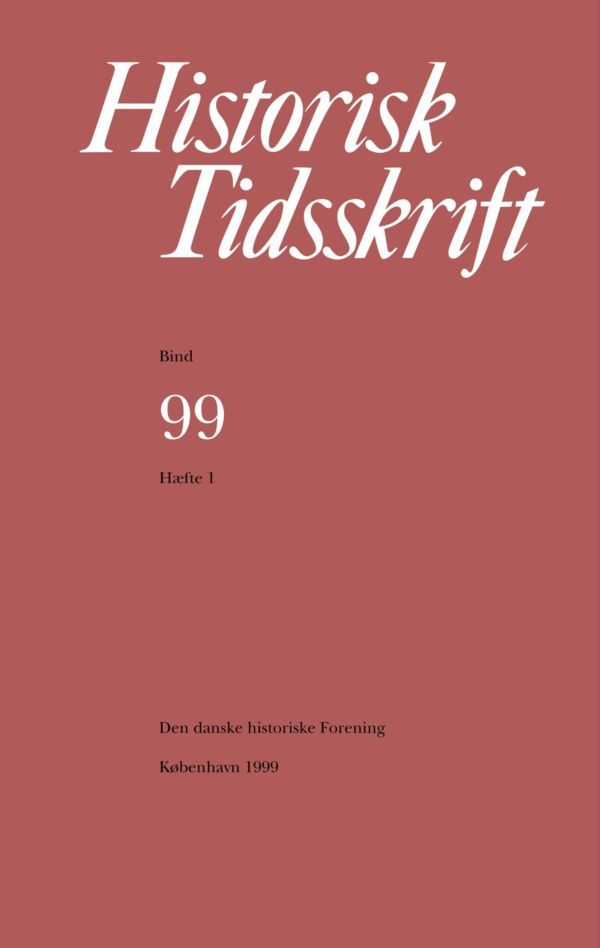Stagnation eller dynamik? Den økonomiske udvikling i Danmark i 1950erne
Resumé
Stagnation or dynamic change: The development of the Danish economy during the 1950sFocusing on the rise in the aggregate level of growth that occurred in the late 1950s, the traditional analysis of the development of the Danish economy in The Golden Age of Capitalism 1950-73 operates with two sub-periods using 1957/58 as the year of demarcation.The periodization is based on two underlying assumptions; significant macroeconomic changes around 1957/58 are assumed to have caused the subsequent increase in aggregate growth, and manufacturing industry - the driving force of the post-war expansion in Denmark as elsewhere - is perceived as lacking dynamic potential until the rise in investment activity after 1958 initiated the necessary process of modernization. Inspired by Schumpeter, the present study challenges the traditional analysis on the basis of a comparative statistical analysis of the assumption that a stagnant manufacturing industry was the principal cause of the low aggregate growth of the 1950s. Thus low output growth was a general phenomenon of all major sectors of the Danish economy up until 1958, and the export performance of Danish manufacturing industry in the 1950s was far more impressive not only compared to the 1960s but also from a Western European perspective than previous research has been willing to admit.On this background it is the hypothesis of the present study that the post-war expansion of the Danish economy was rooted in the willingness and ability of Danish manufactures to transform in light of the altered market conditions from the early 1950s rather than in the coincidence of favourable external developments with the emergence of an industrial policy in 1957/58. A preliminary growth accounting analysis supports the hypothesis as the contribution of technological improvements to output growth in Danish manufacturing appears to have been high by Western European standards in the 1950s even though an increase in the contribution of this factor can be observed in the 1960s. A tentative conclusion would be, that unfavourable conditions may have restrained the level of production in the 1950s but not, however, prevented transformation. The study also concludes that the traditional analysis, as well as playing down the dynamic aspects of the 1950s, has ignored the continuity that existed between the industrial structure that emerged during the protectionism of the 1930s and the post-war boom.According to the article, a general tendency in Danish historical research to interpret the transformations undergone by the Danish economy since the late 18th century as national projects explains why the conventional subdivision of the period has lasted for a quarter of a century despite of an awareness of its limitations. Regarding the post-war period, this has resulted in a heavy emphasis on the importance of government policy to the achievement of economic growth and also lead to widespread references to contemporary sources originating from the political system. However, it cannot be ruled out that the negative assessment of the competiveness of Danish manufacturing industry that characterized these sources to some extent served the dual purpose of supporting the Danish demands for exemption from the general principles of trade liberalization laid down by the OECD and justifying unpopular policy measures to relieve the Balance of Payments.Downloads
Publiceret
Citation/Eksport
Nummer
Sektion
Licens
Ophavsret til bidrag i Historisk Tidsskrift tilhører forfatterne og Den danske historiske Forening som udgiver af Historisk Tidsskrift. For illustrationer gælder den ophavsret, som står anført i billedteksten. Ophavsretslovens almindelige bestemmelser gælder, hvilket vil sige, at ophavsretten gælder i 70 år efter forfatterens død. Bidrag i Historisk Tidsskrift må derfor, med forbehold for en ”moving wall” på tre år, frit downloades, læses, gemmes, anvendes og citeres (med kildeangivelse) i privat og videnskabelig sammenhæng, men de må ikke helt eller delvis genudgives af tredjepart, heller ikke i redigeret form, uden tilladelse fra forfatterne og Den danske historiske Forening. Henvendelse skal i så fald rettes til Historisk Tidsskrifts redaktion på histtid@hum.ku.dk.





